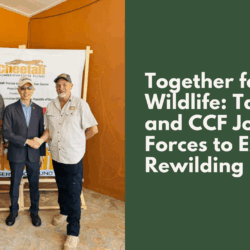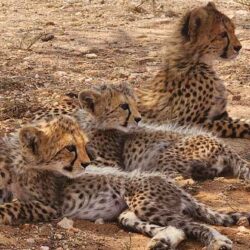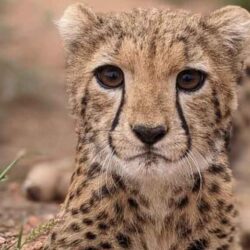Volunteering at CCF’s Cheetah Rescue and Conservation Centre in Somaliland, Africa
-
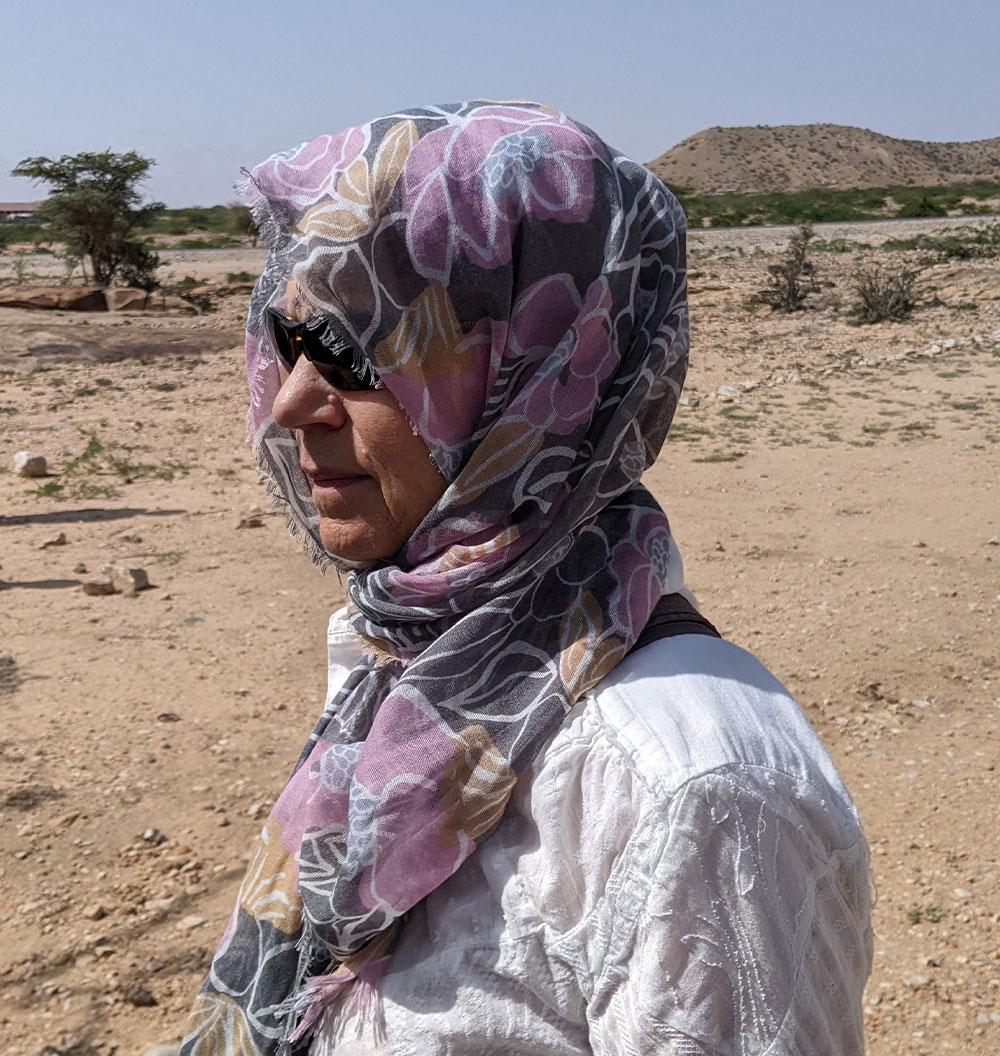
- by Shauna Uher August 8, 2023
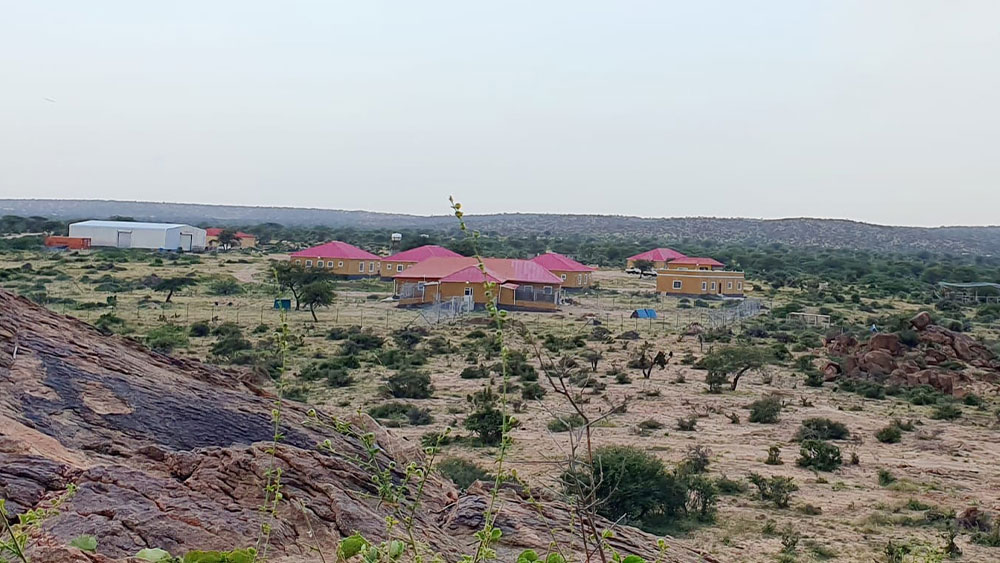
I recently had the opportunity to volunteer for 10 days at the CCF Cheetah Rescue and Conservation Centre (CRCC), north of Hargeisa in Somaliland. I participated in a lot of hands-on activities along with observing and learning about the many facets of this Centre. It was my first trip to Africa, and I am new to the work that CCF is involved in, and I had the privilege of travelling with Dr. Laurie Marker, Executive Director of CCF.
Illegal wildlife trade involving cheetahs in the Horn of Africa is a key concern that CCF is tackling by working on laws and education to reduce the illegal wildlife trade and providing lifelong care for confiscated cheetahs.
We started with a tour of the emergency facilities that CCF had to quickly construct when they received their first confiscated cheetah cubs about 5 years ago. CCF began here with 1 Safe House and quickly grew to 3 facilities in town. These Safe Houses are basically very large areas surrounded by high cement walls with fenced enclosures inside for groups of cheetahs. In February of this year, the facilities in Geed-Deeble were completed enough to begin the move of most of the animals to the much larger enclosures in the natural environment of the new CRCC. When we arrived at the end of June, it was great to see that only 3 cheetahs and a leopard remained in one of the Safe Houses.
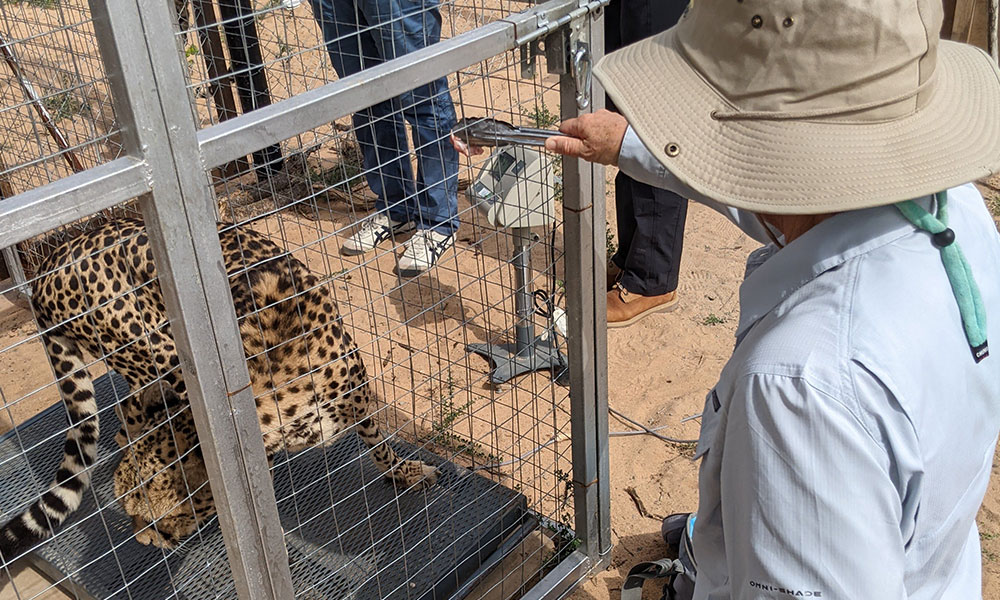
Our tour continued to the new facility in Geed-Deeble, north of Hargeisa. What a difference! Somaliland is in the process of establishing their first National Park and CCF has worked with Somaliland to acquire extensive property in the proposed park. Groups of cheetahs are separated into large enclosures with plenty of natural habitat. There’s also a clinic to care for the special needs of the younger cheetahs, managing the health of the older cheetahs, and providing the extensive medical care that is important for the newly acquired cheetahs that usually arrive here in bad condition; malnourished and very sickly.
My volunteer activities began in earnest the next day. It was the weekly butchery day. Goat carcasses were delivered that would provide the week’s food supply for the 90+ cheetahs living here. The team has systems in place and works well together to complete the tasks of cleaning the goat carcasses, checking the organs, removing the livers to use these nutrient rich organs for individual treats (like a daily vitamin), weighing carcasses and breaking them down for the needs of each group cheetahs. Then all goes in the freezers.
Most of the cheetahs are housed in large open enclosures in the “bush”, and the additional cheetahs that are young or infirmed are in areas connected to the clinic for special care. I spent several days with the ‘bush cat’ team. The Cheetahs looked very similar to me, but the team here can identify each one and know their individual personalities. We admired their systems for isolating specific animals for special care such as medicine, blood draws, weighing them, etc. The cats receive on-going training on recognizing their names and how to lay down on command next to the fence for medical procedures (of course, treats help). Feeding occurs every other day and consists of flinging carcasses and large goat pieces over the fences and going back later in the afternoon to remove and weigh the bones to log how much each group ate. Additionally, they regularly exercise the cheetahs, check fences, clean, prune and maintain the ground in and around the enclosures, move huge tortoises to safety, and do a myriad of other related activities.

I also spent a day with the “babies” at the clinic. These cheetahs are all under 2 years old. They have special diets, additional feedings, plus training sessions to get them used to the “squeeze” (small enclosure for medical observations and procedures). Fun to watch them playing with each other.
The trip wasn’t all work. The CRCC grounds support a wealth of bird activity. A couple of the staff are experienced bird watchers. We went on an afternoon bird walk with them. Although I wasn’t always able to locate all the special birds, they were excited about finding, the unique sounds of the different birds in the area were amazing.
The team working at the CRCC represents over 10 countries. Several local workers are on staff in addition to the international animal keepers and veterinary staff who are there for 1 month to 1-year commitments. It is a remote location and most of the staff live on-site. Procedures and on-boarding processes are in place for smooth transitions for the on-going changes that are a part of the staffing model here.
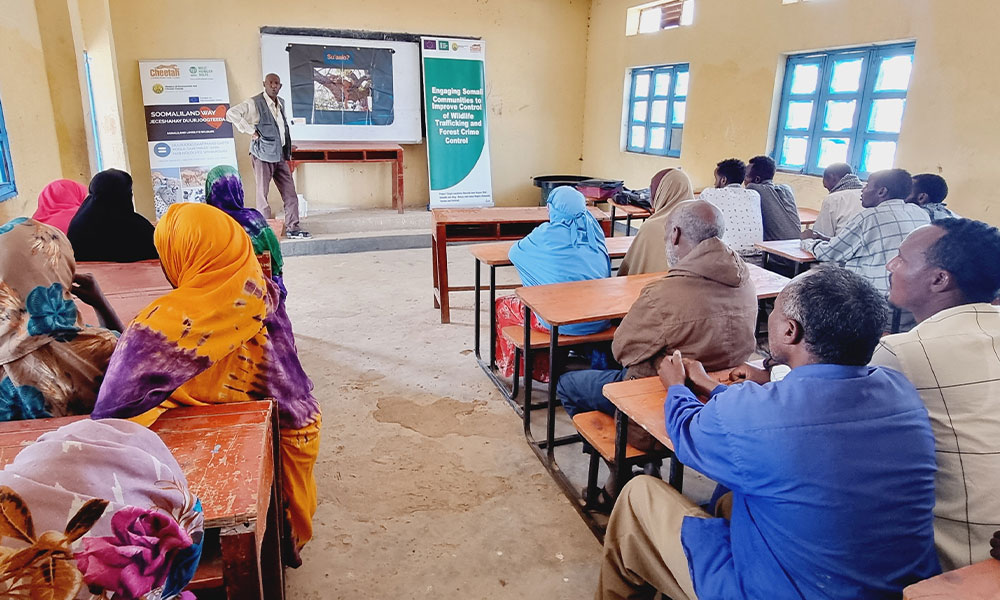
While the care of over 90 cheetahs is a highly visible part of the CRCC in Somaliland, a priority for CCF is to work to eliminate the need to house additional cheetahs by addressing issues affecting the cheetahs in this part of Africa, focusing on illegal wildlife trade. I was introduced to many of the people working on this. There is a CCF communications and education team that goes out to communities to inform rural livestock farmers and pastoralists, adults, and older school children on livestock management concerns in areas with wildlife like cheetahs and mitigating the confiscation of cheetahs for wildlife trade to further the goal of saving cheetahs in the wild. Additionally, CCF works closely with community leaders, lawyers, the Ministries of the government, Ambassadors to Somaliland and others to change laws and increase programs and funding for common wildlife goals.
Funding to support this work has been provided by Department for Environment, Food & Rural Affairs (UK DEFRA) through their IWT Challenge Fund, IUCN through their Save Our Species (SOS) grant, European Union funding, Taiwan Government, One Earth through their Daughters of Earth Fund, and Rainforest Trust.
Funding partners that contributed to the building of our Cheetah Rescue and Conservation Centre and caring for the cheetahs like Columbus Zoo, Nashville Zoo, Arthur L and Elaine V Johnson Foundation.
The plan going forward is to continue to prioritize the work to keep cheetahs in the wild. Additionally, the CRCC will grow as needed to care for cheetahs, add an education center, and possibly other facilities. This is just the beginning, and it will be interesting to follow its continued impact on the well-being of cheetahs in the Horn of Africa and beyond.
Related Reading
-
July 18, 2025
Every Cub Matters: A Lifetime of Fighting for Cheetahs

